The biggest revelations from the J.Lo Super Bowl documentary 'Halftime'
- Oops!Something went wrong.Please try again later.
- Oops!Something went wrong.Please try again later.
- Oops!Something went wrong.Please try again later.
"Halftime," the documentary about Jennifer Lopez's path to her historic Super Bowl halftime show with Shakira, premiered on Netflix on June 14 following a premiere at the Tribeca Film Festival.
Lopez was candid about her thoughts regarding the halftime show, which took place on Sunday, Feb. 2, 2020 in Miami — including the fact that she thought it was a terrible idea to have her and Shakira share the stage.
“This is the worst idea in the world to have two people do the Super Bowl,” Lopez says in the documentary. “It was the worst idea in the world.”
Lopez isn't shy when it comes to expressing her feelings in the documentary: Later on, she tells NFL producer Ricky Kirshner that rehearsing the show has been a "nightmare since we started."
At the time, Lopez was also on the awards show circuit for her role playing a dancer-turned-crime leader in "Hustlers." Lopez saw both career-making moments in conversation.
"I'm a 50-year-old actress with the biggest hit of her career playing a stripper. A woman who embraces the power of her sexuality and turns the way women are objectified on its head. I wanted to put all of that onto that Super Bowl stage," she says.
The documentary also looks back on Lopez's career and the stereotypes she contended with as a Latina performer, including being written off for her appearance. "I think women think if you're too sexy you won't be taken seriously. You cannot cancel out different parts of who you are. They can all coexist," she says.
Read on for other highlights and revelations from the documentary, directed by Amanda Micheli.
She opened up about her relationship with her mom
Lopez's parents, Lupe and David, moved to the U.S. from Puerto Rico. Lopez said her mom instilled in her and her two sisters, Lynda and Leslie, the principles of independence and self-reliance, which she also relied on.
“Growing up, I was surrounded by strong, powerful, tough women. My mom and my grandmother and my aunt — they ran s---," Lopez says.
But, Lopez said, there was a flip side to her mother's behavior. "She did what she had to do to survive. It made her strong, but it also made her tough. She beat the s--- out of us," she said.
Lupe in the documentary says, "I was far from the perfect mother. But everything I did, I did with their best interest at heart." She says, "I always had the highest expectations of them."
She initially thought that sharing the stage with another person was the 'worst idea in the world'
Lopez's manager, Benny Medina, called the fact that both Shakira and Lopez were tapped to headline the show an "insult."
“Typically, you have one headliner at a Super Bowl. That headliner constructs a show, and, should they choose to have other guests, that’s their choice,” Medina says. “It was an insult to say you needed two Latinas to do the job that one artist historically has done.”
Lopez also calls it “the worst idea in the world."
Much of her frustration had to do with time constraints. On a call with Shakira, Lopez laments that they have to share only 12 minutes. “If it was going to be a double-headliner, they should have given us 20 minutes. That’s what they should’ve f---ing done,” Lopez says, sitting on a bed.
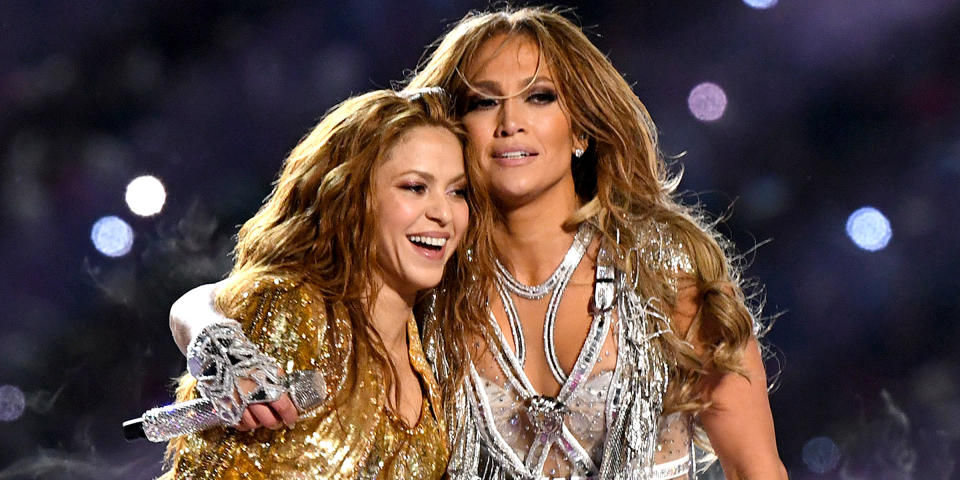
Speaking to her music director, Kim Burse, Lopez says, “We have six f---ing minutes. We have 30 seconds of a song, and if we take a minute, that’s it, we’ve got five left,” Lopez says she didn't want it to be a "dance f------ review," because she has to "sing our message."
She has a heated phone call with NFL producer Ricky Kershner about the show's time crunch. "The finale can't be just one minute. I'm trying to give you something with substance. Not just us out there shaking our asses and f----- belly dancing. I want something real. Something that's going to make a statement. I can't do it if guys keep pressing us for fucking seconds and minutes and we're fighting. I don't want to fight," she says.
She got pushback from the NFL about the performance's message about immigration
While Lopez says she isn't a political person in the documentary, she felt compelled to share a message through her performance.
In one scene, Lopez and her team present their idea to have Latinx children in lit-up cages during the show to the NFL. The visual was meant to be a "subtle" nod to the Trump administration formalizing the policy of separating parents and children at the border.
“I’m thinking a great moment would be to have these fantastic little girl dancers I just met along with hundreds of other girls in light cages. A choir of little girls singing. We want a feeling of Latinos in cages … and you can’t keep us there. We won’t have that. The concept is, this next generation is not going to be suppressed in the way that we were," she says.
Lopez also said the visual of her with Shakira could be powerful: “This girl from the Bronx, this girl that’s a Latina landed on this stage somehow and is here to represent our culture, our music and women everywhere."
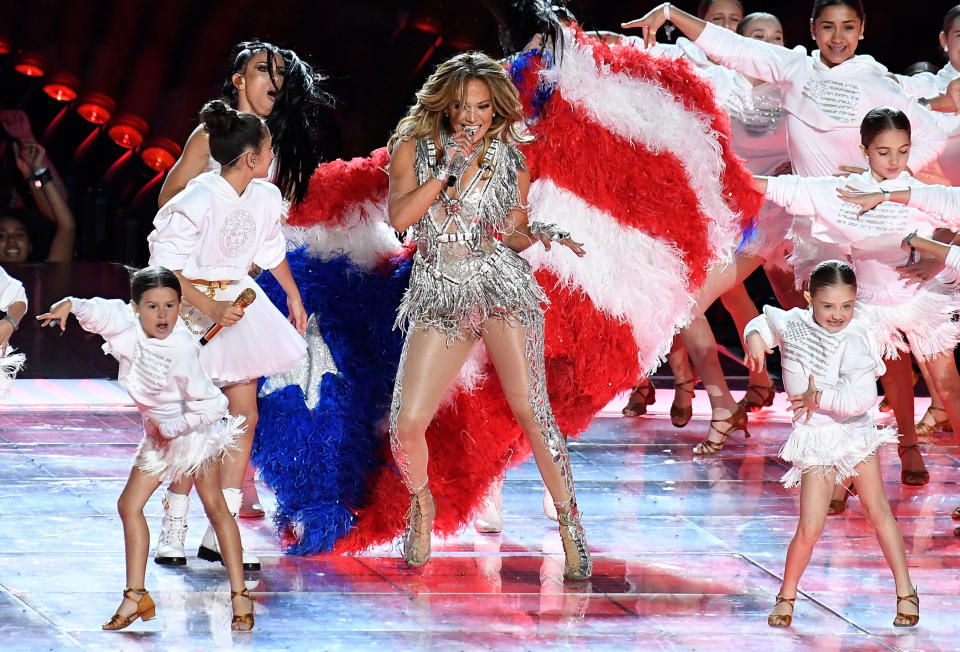
But according to the documentary, the day before Super Bowl, the NFL tried to curtail the powerful visual of young children in cages.
"I get a call from (manager Benny Medina) and he’s like ‘They want to pull the cages.’ That night, the higher ups at the NFL saw it for the first time and were like, ‘Hey! You can’t do that!’” Lopez says.
"The NFL had a real concern about making a political statement about immigration ... they did not want those cages in the show," Medina tells the camera. "They looked at the plans, and the message is absolute. They did not want those cages in the show … coming down from the highest level.”
Lopez says a part of her "got very zen," and refused to change the show.
"I was like, ‘Benny, I don’t care what we have to do, but I’m not changing the show. The Super Bowl is tomorrow and we’re not changing anything,'" she says.
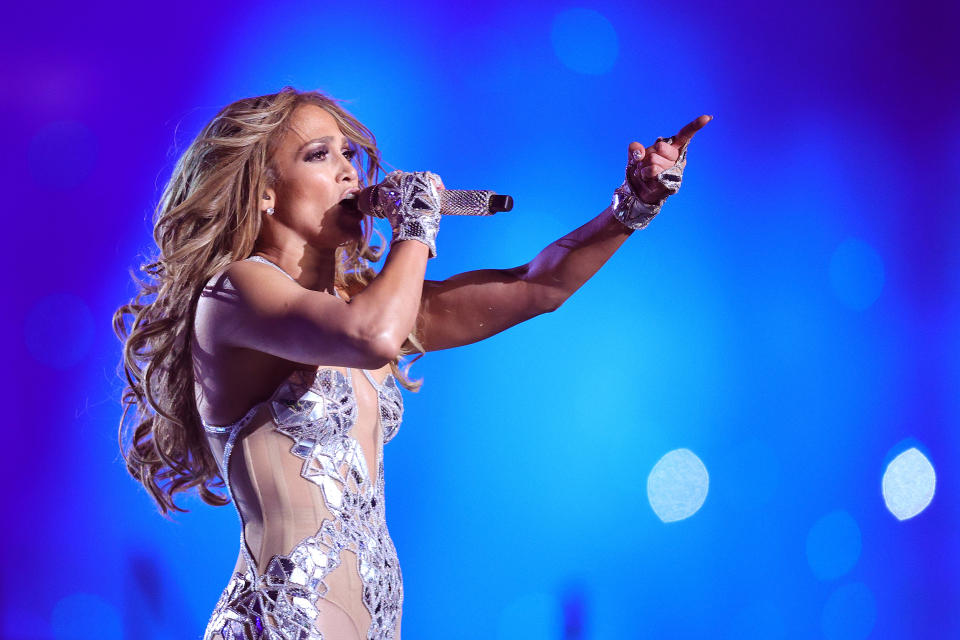
Her Oscars snub was caught on camera
Lopez had a long film career — but "Hustlers" was the first that garnered her Oscars buzz. Despite her lauded performance, Lopez lost out on a Golden Globe to Laura Dern, and then was snubbed by the Oscars.
“The truth is, I really started to think I was gonna get nominated,” Lopez says in the documentary. “I got my hopes up because so many people were telling me I would be. And then it didn’t happen.
"And I had to ask myself, ‘What does that mean?’ I do this not for an award. Or to do my hits up and seem like I’m the best performer in the world. No, I do this to … tell stories and to effect change and connect with people and make them feel things because I wanna feel something.”
'American Idol' helped her get back into the industry
Lopez said that she lost her way as an artist after her children with Marc Anthony, Max and Emme, were born in 2008. “As an artist, I kind of lost a little bit of who I was in trying to build a perfect family life," she says.
Following her divorce from Anthony, she felt she was at a crossroads.
"When my kids were 3, I got divorced, I was a single mom with two little kids. At 42, movie roles were not knocking at my door and as I was getting back to work, I felt like I didn’t know what my value was anymore,” Lopez says.
Lopez says that her time on “American Idol” — she was a judge on Seasons 10, 11 and 13 to 15 — helped bring her back to entertainment.
"I was doing 'American Idol' — that was my first big job after I had babies and it was good for me at the time. People could see me for who I was, and that changed everything. I really learned a lot about myself. I had purpose, and I just felt I had to work on my acting more, my singing more, my dancing more … everything. I just need to be better in every way," she said.
Bruce Springsteen was considered for a cameo
Lopez wanted to incorporate Bruce Springsteen's anthem "Born in the U.S.A." in the halftime show to underline her message that the U.S. is for everyone.
Shakira, she says, didn’t want to sing it, because she wasn’t actually born in the U.S.A. "I told her, 'If you come up with a better song and a better cameo to make a statement that we shouldn't be hating on each other..." Lopez says, trailing off.
Then, had a different idea that aligned more with the political message: Have her daughter, Emme, sing the song.
"I thought it's so much more powerful if Emme does that cameo and sings' Born in the U.S.A.' as a little Latina girl," Lopez says.
Ultimately, Emme, then 11, ended singing "Let's Get Loud." Lopez says, "She doesn't feel nervous because she's next to me. She knows she's going to be safe out there. You look right at that camera and you tell every girl to get loud and not back from from bringing light to injustice," Lopez says tearfully.
Lopez then emerged wearing a double-sided Puerto Rican and American flag, and sang a medley of "Let's Get Loud" and "Born in the U.S.A." with Emme.
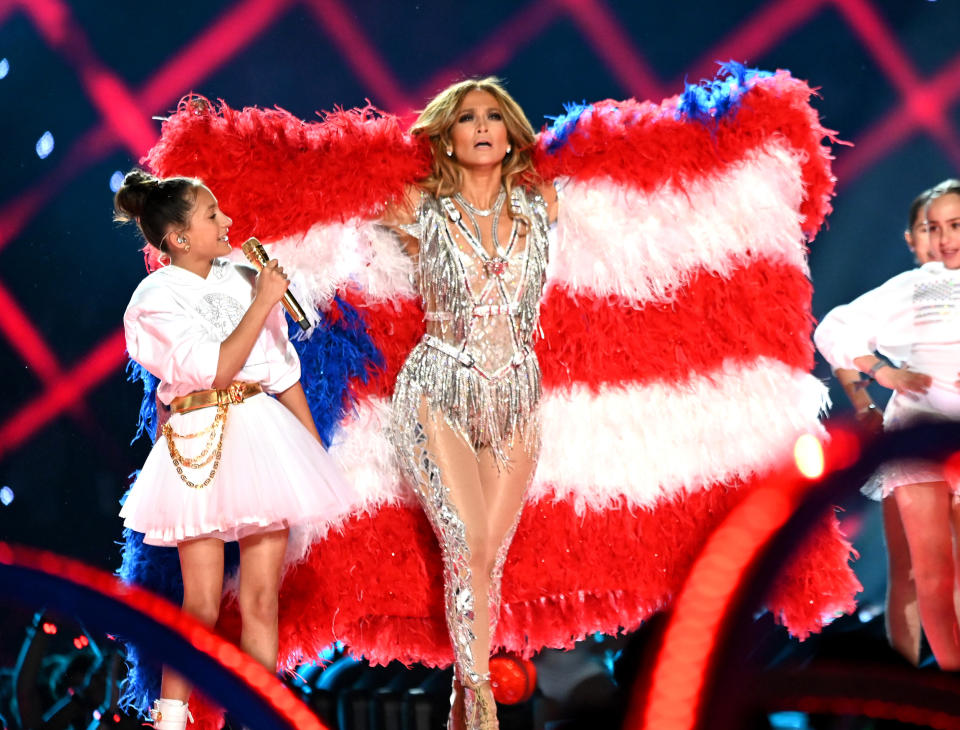
Ben Affleck once asked if media scrutiny 'bothered' her
In the documentary, Lopez talks about how she was always scrutinized for her appearance and curves.
“When I started working, the beauty ideal was very thin, blond, tall, not a lot of curves,” she says. “It was hard when you think people think you’re a joke. Like you’re a punchline. But I wound up affecting things in a way that I never intended to affect them.”
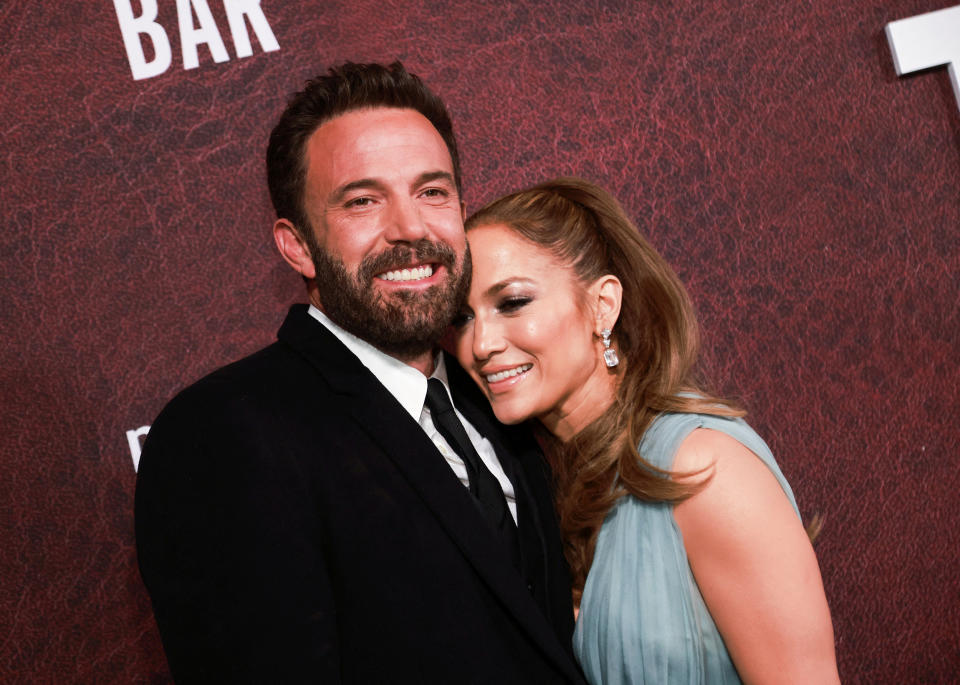
The attention made Lopez consider leaving the industry. “There were many times where I was like I think I’m just going to quit,” she says. “I had to really figure out who I was and believe in that and not believe anything else.”
Ben Affleck, who proposed to Lopez for the second time this April, appeared in the documentary, asking her how she feels about the media comments.
“I said to her once, ‘Doesn’t this bother you?’” the actor recalled. “And she said, ‘I’m Latina. I’m a woman. I expected this. You just don’t expect it. You expect to be treated fairly.’”

